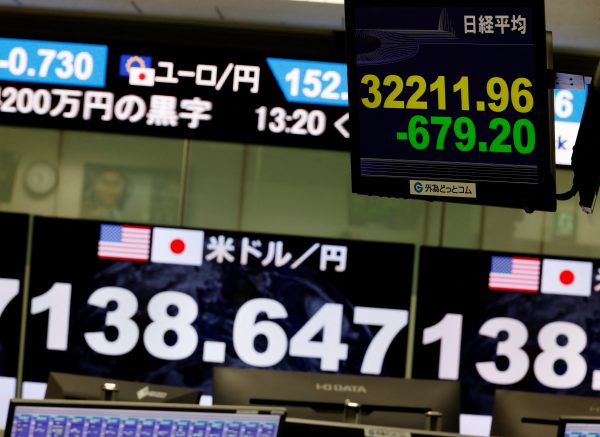Three years after the pandemic’s arrival, some sectors of the economy have bounced back, while others have not. A bright spot is the surge in repatriated earnings from overseas output. Much of these overseas activities take place within production networks and transactions within these networks are more resilient. They recover more quickly from disasters, financial crises and pandemics than transactions outside of these networks.
One way to shed light on how sectors have fared since the pandemic began is to investigate the performance of sectoral stock prices. Finance theory indicates that stock prices equal the expected present value of future cash flows. While day-to-day changes in stock prices may not be informative, empirical researchers have found that long-lasting stock price changes are useful for forecasting economic activity.
Today, the worst performing sector is the railway sector. Stock prices for the Central Japan Railway in 2023 are 53 per cent below their predicted values. People’s behaviour has changed as remote work has reduced travel demand. Local railway operators do not expect ridership to return to pre-COVID levels.
Another sector that continues to perform badly is cosmetics. Stock prices in 2023 remain 39 per cent below their predicted values. Widespread home isolation during the emergency phase of the pandemic and strict restrictions in China reduced the demand for beauty products. As inflation rose in 2021, consumers had to spend more on food and other necessities and economised on cosmetics. As Chinese tourists return to Japan, the cosmetics industry might recover. So far though, this prospect is not reflected in stock prices.
Restaurant and bar stocks are also 20 per cent below predicted values in 2023. Google’s Community Mobility Reports data indicate a large drop in visits to restaurants, cafes and other hospitality venues. People are still dining out less than they did prior to the pandemic. This trend explains why brewery stocks are performing poorly.
Automobiles, auto parts, industrial machinery and engineering, specialised machinery, machine tools and related sectors are doing well. Stock prices have recovered and are performing as predicted. This is reassuring as these technology-intensive industries are crucial for the Japanese economy.
Shimano — a bicycle parts maker — performed remarkably in 2021 and 2022. As COVID-19 hit, people turned from public transportation to bicycles and cars. But now that Japan has opened up, Shimano stocks have returned to behaving as expected.
Semiconductor stocks initially suffered. As the pandemic intensified, automakers and other manufacturers cancelled their orders for chips. But, individuals working from home demanded office equipment, computers and other information and communication technologies which raised the demand for semiconductors. This demand increased even more as individuals spurned public transportation and purchased automobiles. Since 2022, Japanese semiconductor stocks have outperformed expectations.
Delivery services and electronic entertainment companies made gains and remain successful. People who isolated at home relied on companies such as Nippon Express and Yamato Transport to deliver goods to them. They also turned to electronic games from companies like Nintendo for entertainment. These changes in consumer behaviour have persisted. Delivery company stocks in 2023 remain 30 per cent higher than predicted and electronic entertainment stocks are 40 per cent higher also.
Since Japanese companies are active globally, it is also important to investigate how exports, imports and income flows have behaved since the emergence of COVID-19. Real exports fell 26 per cent between February and May 2020. This drop was far more dramatic than forecasted. Exports returned to their predicted values in October 2020 and remained near forecasted values for the next two and a half years.
Real imports were statistically significantly lower than predicted during the first nine months of 2020. For the next two and a half years, imports remained less than predicted but the difference between predicted and actual values was no longer statistically significant.
Repatriated earnings from abroad, on the other hand, are doing much better than expected. Primary income flows collapsed during the first seven months of 2020. They then recovered. In 2022, primary income flows remained significantly above their forecasted values, controlling for the exchange rate and other macroeconomic variables. As the elevated yen costs of imported oil, food and other commodities have produced trade deficits, outsized primary income inflows have kept the Japanese current account in surplus.
The COVID-19 pandemic continues to deal a body blow to the Japanese economy. But Japanese corporations’ strategies of joining production networks, relocating production closer to final markets and repatriating profits are helping to stabilise the Japanese economy.
Willem Thorbecke is a Senior Fellow at the Research Institute of Economy, Trade and Industry, Japan.


A few weeks ago I read elsewhere that foreign tourism has begun to rebound. China more recently announced that group tours could resume going to Japan. When I was there in Nov-Dec 2019, the numbers of Chinese tourists were staggering. If the volume of tourists from China return to their pre-pandemic levels, thst should help the industry a lot. Hotels, restaurants, and railroads should get much busier.